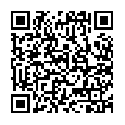Mobile. The very word makes some of us cringe these days. Everywhere you look in the marketing world, you see signs of it – mobile this, mobile that… Is it just me, or is it a bit overkill?
Sometimes, I feel like we’re pushing the idea of mobile to the limit. But then I look at the numbers:
- There are currently 750,000 apps in the App Store alone.
- These apps have over 40 billion downloads.
- There are one billion smartphones existing in the world, and that number is growing.

Whoa.
There are over one billion consumers looking for information on their mobile devices, and you know what works when consumers are looking for information? Inbound marketing.
In this post, I share the top three most effective inbound marketing tips app marketers can use to begin making waves in the world of mobile.
Inbound marketing wins in mobile
The opportunity to connect deeply with consumers through inbound marketing has never been larger than it is today, and mobile is fueling a huge amount of the growth. When it comes to apps, all you need to know is this: apps have already surpassed the web when it comes to consumer time-spent, and are second only to time spent watching television.
 1. Be social
1. Be social
By this point, we should all understand how important social is to any good marketing strategy. However, when it comes to mobile, social is just what we do as humans. We text and email like crazy. We ride the bus and check Facebook. We Instagram our lunches and Tweet our random observations while standing in line at Starbucks.
These days, to be mobile is to be social. This means that social is a perfect venue for conversations about your mobile app’s offerings. Let’s take a look at two of social’s leaders and how they can be used for mobile purposes.
A while back, Nike ran a Twitter-focused experiment to introduce a new mobile app they’d created. They proactively shared their content and the app with likely consumers who were sharing their athletic activities on Twitter. The results astounded them. Their two week experiment yielded:
- Over three clicks per outbound Tweet
- A doubling of the positive ratings and reviews in the app store for their app
- As many downloads from the Twitter campaign as their largest paid channel
Although Nike is a large company, the results of their campaign fascinating at any level. The last part is the most interesting: they received as many downloads from their social “experiment” as they did through their largest paid channel. The ROI was extraordinary.
It’s impossible to talk about the social landscape without bringing up Facebook. For mobile, Facebook can be incredibly important. For certain categories of apps (movies, tv, games, news, and others), connecting with Facebook drives a massive increase in revenue and engagement from users. Take a look at the data from some of the most popular apps who have integrated a Facebook login.

Facebook isn’t necessarily the best option for every app developer, but when it’s done well, it’s clear that integrating Facebook into your app can really improve your results.
2. Tell your own story
Consumers generally surf and search for apps from within the app store. As such, making sure that you’ve optimized your app store presence is absolutely crucial. Getting discovered by a large audience of interested customers can be as simple as:
- Selecting the right name
- Investing in a compelling and memorable icon
- Experimenting with categories and keywords, and
- Testing and optimizing your app’s description (social proof in the description itself works wonders – take a look at the description that document signing app SignNow has crafted)
You must own your presence in the app store and also make it another channel for telling your app‘s story. Most app developers gloss over many of the important details that can affect downloads for an app. It’s important to not let the app store tell your app’s story for you. If you do, you’ll be missing out on a large marketing opportunity.
The app store is only one place to tell your story. Using your website and other channels to share why people use your app and what problems you’re solving is an increasingly powerful method of enabling app discovery, and it also makes your app seem more “human.”
Because apps are so exceptional at providing task-oriented solutions in small consumable packages, journalists and bloggers are actively searching for apps they can share with their audiences. The largest tech blogs and app review sites routinely drive as many installations as a feature in the app store. Take the time to produce content and information that will appeal to journalists and share your story in enough detail that they’ll discover your app and want to learn more. For a great example, take a look at how the small team behind Chewsy has shared their unique take on restaurant and dish reviews with publications like Forbes.By sharing your story with these outlets, it’s likely that your downloads will increase.
3. Court your audience of fans from day one
It should be clear that you want to own your story and tell it in the app store and elsewhere. However, there is another, more powerful route – having your customers tell great stories about you. Not only is this personally gratifying (nothing’s better than hearing from a customer that you’ve developed something that delights them), but word of mouth is incredibly effective. Consumer studies continue to show that recommendations from the people we know are trusted the most for the average consumer.

Now, how do you get your fans to go tell their friends and say good things in public?
For many web businesses, this is an incredible challenge because there’s no centralized source for customers to share their thoughts. For mobile apps, that’s not the case – the app stores give you a great venue for this in the form of the ratings and reviews sections.
But how do consumers get to the app store to review your app? Despite the existence of easy opinion-sharing venues most customers don’t speak up.In fact,it appears that less than 0.1%of downloads result in a rating or review in the app store. Most consumers need a nudge – a reminder that they can share their thoughts and opinions.
This is why you should be proactively connecting with your customers from day one. If your app has a returning audience it means that there are people who are a fan of what you’ve built. Those customers are highly likely to share their fandom with the world, if you make it easy for them to do so.
The wonderful thing about developing apps is that you can use them as a direct channel to talk with your customers. Reaching out to your biggest fans inside your app, and connecting more deeply with them is a powerful strategy for increasing customer loyalty and motivating a group of evangelists.
Connecting with your audience of fans certainly increases the number of customers leaving great reviews for your apps, but it’s about more than just reviews. It’s about the recognition that we walk around with our smartphones all day long.
When we take a look at our phone in a meeting or open it at dinner, we’re around others, introducing them to apps we love. By communicating closely with your customer base, you can massively change your awareness and download trajectory. We’ve talked with a number of developers who can map their adoption geographically. Word of mouth, in the real world, is a major inbound channel for mobile which every app developer can influence in a meaningful way.








